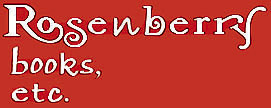“Go first class’. That’s where Rosenberry Books came in.”
Jane approached Lynn Brower, whose museum shop at the state history museum is an unexpected mecca of local art. Jane had thought originally that “I would do the drafting for the new quilts and they’d just be photocopied as before.” Lynn, however, “suggested that for the anniversary symposium a more sophisticated presentation of the full-sized patterns be created. It seemed much more appropriate to ‘go first class’. That’s where Rosenberry Books came in.”
“When I drove away from Raleigh” remembers Diane Katz of Rosenberry books, “after my first meeting with Lynn and the curators, I had this big roll in my back seat of Jane’s pencil-drawings on graph paper. I knew that we were joining a marvelous and sizeable undertaking. But, oh-my-goodness, we only had a couple of months before the symposium!”
Diane is a book designer and an artist. Diane had no experience with quilts, “…not even a quilt in my grandparent’s house. But by the time the book was published, I felt as if I had made several quilts.”
The patterns were designed the old-fashioned way. There wasn’t time to learn the latest in quilting software. “We were a group of women,” Diane explains, “with a variety of skills, looking at some fine old quilts. We just put our heads together and figured out how the quilts could again be made.”
“The designs were drawn accurately, true to the original quilts, but had to be replicated for printing,” Jane adds,” and it has been accomplished magnificently. Our grandmothers used pencil and paper and scissors and hand-stitched these pieces together to form the block. It is amazing how accurate they are. (I remember one block that measured 19-1/4″ no matter how I tried to do it differently! And that is a strange measurement by any standard.)”
Inspiriation from Special Paper
The original idea was to make one edition of the book, as inexpensively as possible. Diane then discovered among her handmade paper sample books a shimmering silk-like jacquard checked paper and a mulberry paper with little colorful pieces of fabric imbedded in it. “We looked at each other and knew we had to create a deluxe edition using these beautiful fabric-like papers.”
Although time was extremely short, two handbound editions were available at the anniversary symposium. A standard and a deluxe edition continue to be handbound with linen cord by artisans in the woods of North Carolina.
Creating Pieces of History: a Handbound Book about Handmade Quilts, part 2
by Jane Hall and Diane Katz



